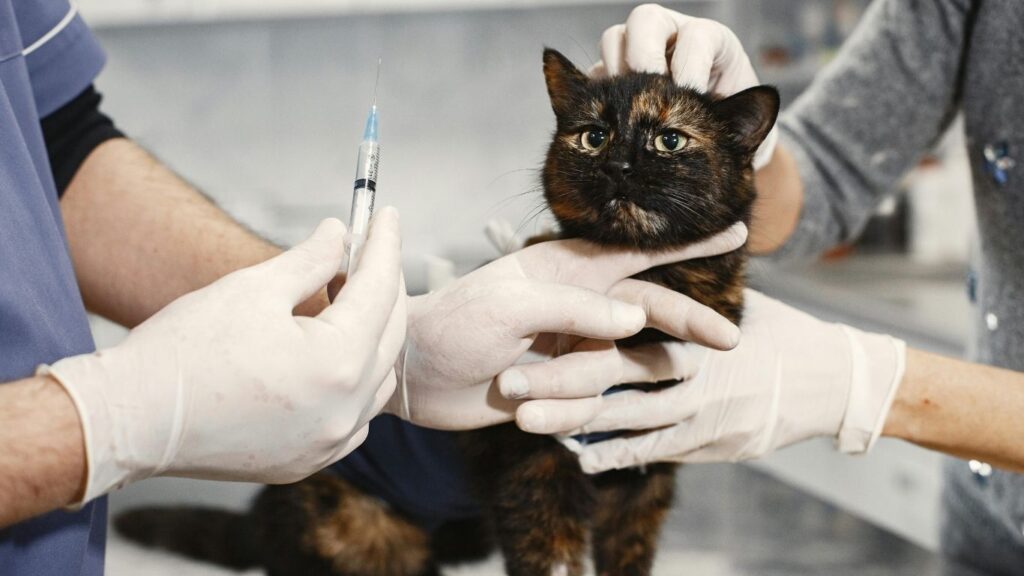Losing mobility is a distressing experience for both cats and their owners. If your cat is suddenly showing signs of motion loss—such as difficulty walking, dragging limbs, or becoming inactive—it’s crucial to understand the potential causes, warning signs, and treatment options. In this guide, we’ll explore everything you need to know about cat loss of motion to help your feline companion recover comfortably and safely.
medicine: cat loss motion

What is Cat Loss of Motion?
Cat loss of motion refers to a sudden or gradual inability to move parts of the body—usually the legs or spine. This condition may affect one limb, multiple limbs, or even the entire body, depending on the underlying cause. It’s a serious issue that requires immediate veterinary attention.
Related: Cat Injections: Everything You Need to Know About Feline Vaccinations
Common Causes of Motion Loss in Cats
-
Trauma or Injury
Cats involved in accidents, falls, or fights may suffer spinal cord injuries or broken bones, leading to partial or complete motion loss. -
Feline Stroke (Feline Ischemic Encephalopathy)
A stroke can cause sudden paralysis or coordination issues in cats, typically affecting one side of the body. -
Intervertebral Disc Disease (IVDD)
This spinal condition can compress nerves, causing pain, weakness, or full paralysis. -
Arthritis or Degenerative Joint Disease
Older cats may lose mobility due to chronic joint pain and stiffness. -
Feline Diabetes or Neuropathy
Unmanaged diabetes can lead to nerve damage, especially in the hind legs. -
Thromboembolism (Saddle Thrombus)
A blood clot near the spine or hind limbs can restrict blood flow, causing sudden pain and inability to walk. -
Neurological Disorders
Conditions like cerebellar hypoplasia or tumors can impair coordination and balance.
Symptoms of Motion Loss in Cats
-
Sudden limping or dragging of legs
-
Inability to stand or walk
-
Loss of coordination or balance
-
Painful vocalizations when touched or moved
-
Unusual posture or curling of limbs
-
Lethargy and refusal to jump or play
-
Incontinence (loss of bladder or bowel control)
When to See a Veterinarian
If your cat shows any signs of motion loss, don’t wait. Early intervention can make a huge difference, especially if the condition is due to stroke, blood clots, or injury. A vet may conduct X-rays, blood tests, and neurological exams to diagnose the issue accurately.
Treatment Options for Cat Motion Loss
-
Medication: Anti-inflammatory drugs, pain relievers, or antibiotics may be prescribed depending on the cause.
-
Surgery: In cases of trauma, spinal injuries, or tumors, surgical intervention might be necessary.
-
Physical Therapy: Rehabilitation exercises can help restore mobility over time.
-
Diet and Supplements: Omega-3s, glucosamine, and other supplements support joint and nerve health.
-
Mobility Aids: Special harnesses, slings, or cat wheelchairs can help severely affected pets regain independence.
Related: All You Need to Know About Tapeworms in Cats
How to Care for a Cat with Motion Loss at Home
-
Create a Comfortable Rest Area: Use soft bedding and keep food, water, and a litter box within easy reach.
-
Assist with Mobility: Help your cat move safely around the house to prevent muscle atrophy.
-
Monitor Symptoms: Keep track of improvements or worsening signs and communicate them to your vet.
-
Practice Gentle Handling: Avoid picking up your cat in ways that cause pain or stress.
Preventing Future Episodes
While not all causes of motion loss can be prevented, regular vet checkups, a balanced diet, safe indoor environments, and early treatment of chronic conditions like diabetes or arthritis can reduce the risk.
Final Thoughts
Cat loss of motion is a frightening experience, but with prompt veterinary care and compassionate support at home, many cats can recover or adapt to a new lifestyle. Recognizing the signs early and acting quickly gives your feline friend the best chance at a happy, comfortable life.








